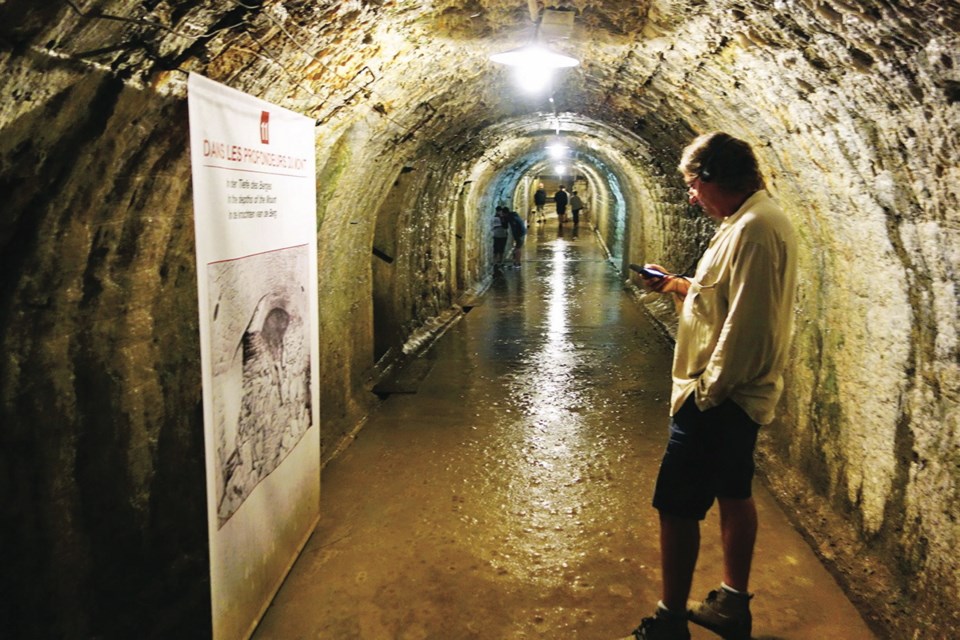November marked the 100th anniversary of the end of the First World War — “the war to end all wars,” which cost an estimated 40 million lives.
While there are no more survivors to share their stories first-hand, First World War sights and memorials scattered across Europe, especially in France and Belgium, do their best to keep the devastation from fading from memory.
Perhaps the most powerful First World War sightseeing experience is located about 225Â kilometres east of Paris at the battlefields of Verdun.
It was here in 1916 that roughly 300,000 lives were lost in what is known as the Battle of 300 Days and Nights. The longest single battle of the war, it left the landscape barren for decades. Today, the traces of war are buried under thick forests, the soldiers’ vast network of communication trenches overgrown — and haunted by their ghosts.
Plenty of rusty battle remnants and memorials are still accessible. A string of battlefields can be found along a 13-km stretch of road outside the town of Verdun. From here it’s possible to see (with a guided tour, rental car, shuttle bus, or taxi) the most important sights and appreciate the horrific scale of the battle.
You can ride through the eerie moguls left by the incessant shelling, pause at melted-sugar-cube forts, ponder plaques marking spots where towns once existed, and visit a vast cemetery.
To get a good overview, start at the Verdun Memorial Museum, which delivers gripping exhibits about the battle (with lots of information in English).
The museum is rich in artifacts and works to pair German and French objects; for example, you’ll see a circa 1916 loaded-up German rucksack right next to a French one.
In one part of the museum, a battlefield replica — complete with mud, shells, trenches, and First World War military equipment — is visible through the glass floor.
You can learn about medical help in the trenches and leaps in technology (from X-ray machines to machine guns with synchronized firing, which prevented bullets from hitting airplane propeller blades).
I found out that the majority of injuries in this battle weren’t caused by machine-gun bullets, but by shrapnel: Every time an artillery shell exploded, jagged bits of the shell’s casing sprayed like buckshot. On both sides, most men died without ever seeing the enemy.
Another key sight for visitors is Fort Douaumont, just northeast of Verdun. Constructed in 1885, the fort was the most important stronghold among 38Â hilltop fortifications that protected France from a German invasion.
Built on top of and into the hillside, it ultimately served as a strategic command centre for both Germany and France at various times. Soldiers were protected by a thick layer of sand (to muffle explosions) and a wall of concrete up to two metres thick. Visitors today can experience these corridors, where soldiers were forced to live like moles, scurrying through three kilometres of cold, damp hallways.
Visitors can also climb to the bombed-out top of the fort to see the round, iron gun emplacements that could rise and revolve. The massive central gun turret was state-of-the-art in 1905, antiquated in 1915, and essentially useless by the time the war arrived in 1916. From the perch at the top, looking out at fields leading to Germany and imagining the carnage in that horrible battle is an unforgettable experience.
On the battlefield nearby, a young French officer named Charles de Gaulle was wounded; he spent the next 32 months as a German POW.
The nearby Douaumont Ossuary is the tomb of unknown French and German soldiers who perished in Verdun’s muddy trenches. In the years after the war, a local bishop wandered through fields of bones — the remains of about 130,000 unidentified soldiers.
Concluding that they deserved a respectful final resting place, he began raising money for the project — which was officially inaugurated in 1927.
The building has 46 granite vaults, each holding remains from different sectors of the battlefield. The unusual artillery-shell-shaped tower and cross design of this building symbolizes war and peace (imagine a sword plunged into the ground up to its hilt).
For all that’s sobering to remember here, these Verdun memorials also offer visitors something beautiful to see: German, French, and European flags wave alongside each other, as if to exclaim: “We learned, and we won’t do this again.”
Say what you like about the European Union, it’s hard to deny what a great accomplishment it has been to weave together the economies of two historic enemies — and foster the empathy that comes with getting to know each other.
In 1914, most French soldiers had never met a German, and vice versa — making it all too easy to carelessly kill each other. Thanks in large part to the EU, we live in a different world today, built on a solid foundation for maintaining European peace — a lesson that bears repeating as we mark the end of the Great War.
Rick Steves (ricksteves.com) writes European travel guidebooks and hosts travel shows on public television and public radio. Email him at [email protected] and follow his blog on Facebook.



